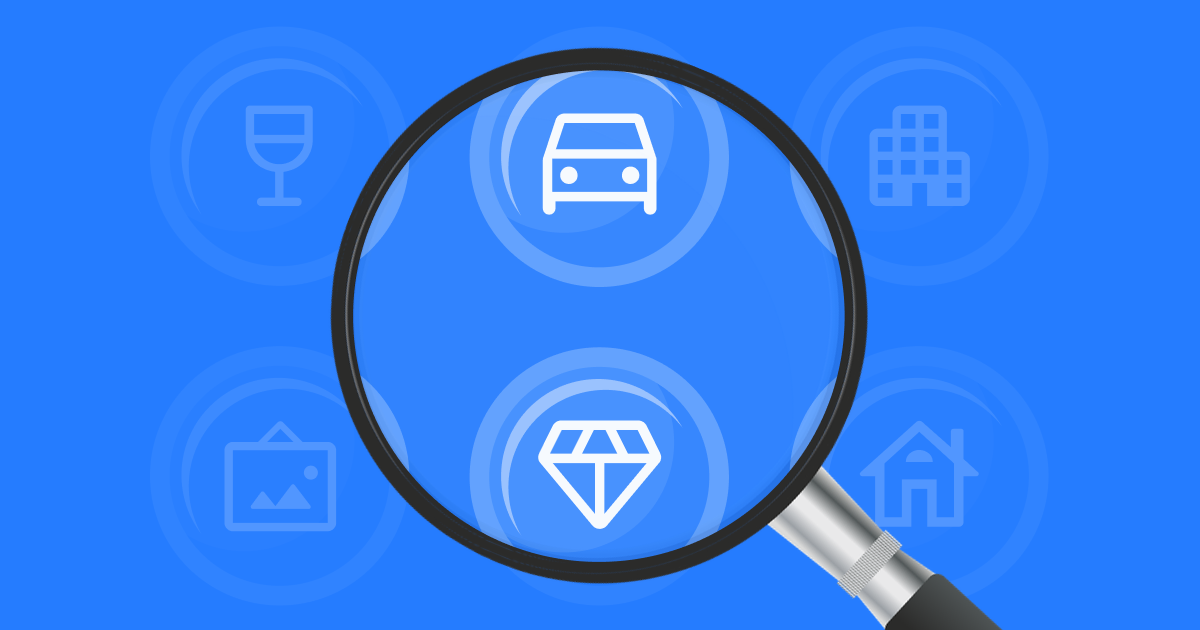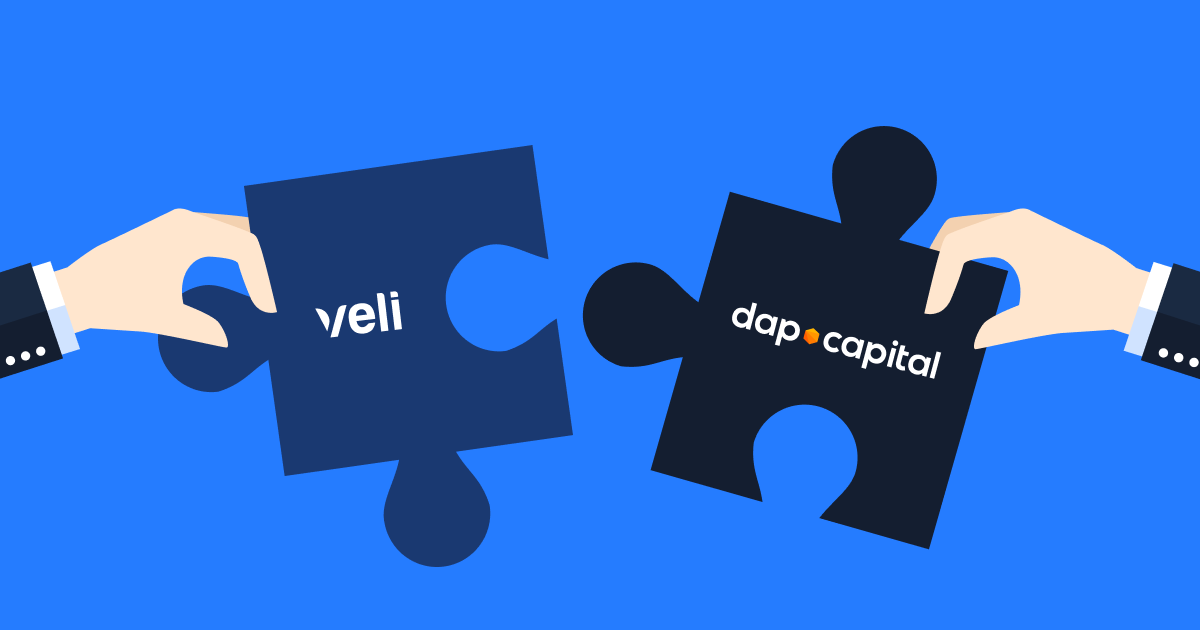Veli Won Best Startup Award by Plug and Play 🏆...

Tokenization has revolutionized the way we manage and invest in assets by turning any real-world asset into a token on the blockchain, thus giving investors more liquidity, accessibility and transparency.
In this blog post we will outline a complete guide to tokenization, giving the explanation of what tokenization is and what its benefits are before exploring all the types of tokenizable assets and touching on what our plans with tokenization are.
Tokenization is the process with which real-world assets are turned into digital tokens on the blockchain, through smart contracts. The on-chain digital token now represents the ownership rights of the owner in the underlying real-world asset.
Through this process, any real-world asset, physical or non-physical, can be turned into a token on the blockchain, giving investors access to never-seen-before investment opportunities.

According to a 2022 Boston Consulting Group (BCG) report, they estimate that the size of the tokenized illiquid assets, including real estate and natural resources, could reach $16.1 trillion by 2030.
Aside from BCG, other large corporations, such as BlackRock, Deloitte and EY have delved into asset tokenization after understanding the potential of blockchain technology.
Tokenization Example
If you own a valuable painting worth $100,000 and are in need of liquidity, you can convert the ownership of this artwork into 100,000 tokens on the blockchain through tokenization, with each token representing a 0.001% ownership stake in the painting.

Now, you are able to sell a percentage of the painting through the tokens to have access to instant liquidity, without having to sell the entire painting. When someone purchases a token, they invest in a 0.001% stake in the painting.
Tokenization simplifies and improves the financial system by using blockchain technology. It combines different financial tasks, like creating, trading, and keeping track of assets, into one efficient process.

To tokenize an asset, you go through steps like deciding if the token is fungible or non-fungible, choosing the blockchain, and getting an auditor to verify traditional assets. The decentralized nature of blockchain means that ownership records are secure and cannot be changed, making the system trustworthy.
There are three main benefits to tokenization of real-world assets:
Accessibility: High-upside assets often can’t be accessed by common investors due to financial and regulatory constraints, like financing a big-budget movie or investing in foreign assets. Tokenization acts similarly to crowdfunding, enabling a group of investors to collectively fund or purchase an asset and share in the financial rewards by having the ability to invest in a fractionalized percentage of the asset. This model offers smaller investors a pathway to engage in riskier yet potentially high-return assets with relatively low capital.

Liquidity: Asset tokenization extends liquidity to historically illiquid assets, representing them as millions of tokens for fractional ownership, such as the painting described in the example above. These tokens can be listed on various exchanges, centralized and decentralized, removing the need for costly intermediaries and broadening the buyer pool while maintaining ties to the underlying asset.
Transparency: Tokenization brings transparency to high-value assets by enabling open tracking and auditing of critical information, including ownership history and returns. This is especially beneficial when evaluating foreign assets or assets that buyers can’t inspect personally. On the blockchain, users can access records of ownership and returns, reducing investment security risks through immutable, trust-minimizing records. These features have the potential to combat fraud in various industries, particularly in areas prone to forgeries and knock-offs, like luxury goods, fashion, and art.

Real Estate: Real estate emerges as potentially the most compelling business case for tokenization, revolutionizing the industry and providing new and revolutionary liquidity solutions. Thanks to tokenization, fractionalizing allows any type of investor, big or small, to be able to invest in real estate. Tokenization also minimizes transaction costs in real estate, leveraging the blockchain for efficient buying, selling and information sharing.

Precious Metals: Precious metals, notably gold and silver, have stood as enduring stores of value for centuries. While they are legally categorized as fungible assets, the physical fragmentation of these assets is feasible, making tokenization an accessible and efficient option. Gold, the most renowned precious metal, faces challenges in high custody and shipping costs, while other metals, like palladium, encounter liquidity issues. Tokenization emerges as the ideal solution, offering fractionalization to reduce entry barriers, providing a digital tracing system through the blockchain and ensuring a cost-effective storage solution while reducing risks associated with physical custody.

Stocks & Private Equity: Tokenizing company shares is a quintessential application of blockchain technology, unlocking opportunities for businesses to access a broader investor base and raise capital more efficiently. By replacing traditional capital-raising methods and Initial Public Offerings (IPOs) with Security Token Offerings (STOs), entrepreneurs can enjoy reduced upfront capital requirements while opening their company to a global pool of investors through a digital process. This approach not only benefits businesses seeking growth financing but also enables investment bankers to expedite the funding process by reducing costs and intermediaries.

Art: Fine art, with its substantial economic growth potential, is an attractive addition to investment portfolios. Traditionally, art investment faced barriers, from exclusive private auctions to high-ticket sizes, limiting access and liquidity, something individual investors don’t possess. Tokenization enables art owners to liquidate only a portion of their art and retain custody over the physical asset, while other shareholders benefit from art appreciation. The business case for art tokenization is compelling, providing liquidity for owners and access for diverse investors.

Luxury Goods: As the global luxury market grows to more than $1.5 trillion by 2025, the pivotal role of millennials and generation Z consumers, which drive 85% of luxury sales growth, is undeniable. This shift towards digitalization aligns seamlessly with the potential of tokenization. Tokenization addresses the issue of inherent illiquidity of this asset class by offering fractional ownership, while introducing the new concept of temporary luxury experiences. Beyond profitability, an advantage of implementing blockchain in Luxury Goods lies in providing consumers with transparency regarding the product’s history and proof of authenticity, a staple in the younger generation’s attention economy.
We at Veli believe tokenization is pioneering the future of investing, offering unparalleled opportunities for financial accessibility, transparency and high liquidity. Tokenization is the next trillion dollar industry, and we believe everything illiquid that has monetary value, such as real estate, equity, art, etc., can and will be tokenized in the future.

Our story with tokenization began with our partnership with DAP Capital, a platform specializing in tokenization of real world assets. As soon as we announced our partnership, we were approached by multiple companies looking for tokenization services, to tokenize their real estate and company equity assets.
The reason why companies looking for tokenization services want to work with us is because we offer the full suite of tokenization services. The majority of other platforms only offer the technological aspect, such as tokenization, minting and burning of the assets, while we also offer the sales of those assets through our financial advisory portal. Companies that tokenize through Veli can offer their assets to financial advisors and their wealthy clients on our financial advisor portal, providing them attractive yields.

We plan to dive deeper with the offerings of our tokenization services, being able to tokenize not just real estate and equity, but also luxury goods, commodities and fine art. Our goal is to create a reguary setup to be able to offer our tokenization services in a way that is fully compliant with up-to-date regulations.
In one sentence, tokenization turns illiquid assets, liquid. Through fractionalization, individual investors are now able to invest in high entry-barrier assets, such as Real Estate, Luxury Goods and Art, without enough liquidity to purchase the entire asset, while the owners of the underlying asset can turn their illiquid assets more liquid.
Tokenization also gives investors access to a global range of assets not attainable before tokenization, such as stocks and private equity of foreign companies, or unreachable commodities due to complex storage and custody solutions, such as precious metals like gold, or exotic assets, like uranium.

We are one of the pioneers leading the tokenization revolution by providing tokenization services to companies looking to tokenize their assets, while offering tokenized asset sale services to financial advisors and their clients through our financial advisor portal.
If you are a company looking for tokenization and tokenized asset sale services, you can contact us through our email help@veliapp.io.
If you are a financial advisor whose clients are looking to invest into tokenized assets, you can learn more about our Financial Advisor Portal here.
Veli Partners with DEC Institute to Equip Finance Professionals for...
Veli Partners with EIMF to Bring MiCA and Compliance Education...